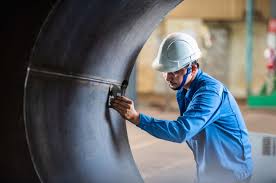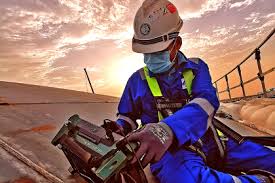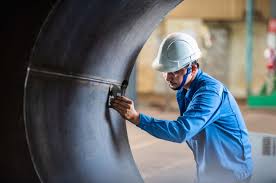Efficient Guided Wave Inspection for Egypt's Pipelines
Guided wave inspection has proven to be an efficient and effective method for assessing the integrity of pipelines in various industries. In the context of Egypt's pipeline infrastructure, the implementation of guided wave inspection techniques is of utmost importance to ensure the safety and reliability of the country's critical assets. This article will explore the significance of guided wave inspection for Egypt's pipelines and discuss its potential benefits in maintaining the integrity and functionality of the country's pipeline network.
Efficient Guided Wave Inspection is a non-destructive testing method used to assess the condition of pipelines in Egypt. This technology allows for the detection of corrosion, erosion, and other defects in the pipelines without the need for extensive excavation or shutdowns. It is a cost-effective and efficient way to ensure the integrity and safety of the pipelines, preventing potential leaks and failures. This method is particularly important for the extensive network of oil and gas pipelines in Egypt, helping to maintain the reliability and longevity of these critical infrastructures.
Exploring the Advantages of Guided Wave Inspection for Egypt Pipelines

Exploring the Advantages of Guided Wave Inspection for Egypt Pipelines involves understanding the benefits of using guided wave technology for inspecting the pipelines in Egypt. This technology allows for the inspection of long lengths of pipeline from a single access point, reducing the need for extensive excavation and disruption to the surrounding area. It also provides accurate and reliable data on the condition of the pipeline, helping to identify potential issues before they become major problems. Additionally, guided wave inspection is a cost-effective and efficient method for ensuring the integrity and safety of Egypt's pipelines, making it a valuable tool for the country's infrastructure maintenance and management.
Challenges and Solutions for Utilizing Guided Wave Inspection in Egypt

One of the key challenges for utilizing guided wave inspection in Egypt is the lack of trained personnel with the necessary expertise to properly carry out the inspections. This can be addressed through providing specialized training and certification programs to increase the availability of qualified professionals in the field. Another challenge is the presence of complex and varied pipeline systems in Egypt, which can make it difficult to implement guided wave inspection across different types of pipelines. Developing customized inspection solutions for specific pipeline configurations and materials can help overcome this challenge. Additionally, the harsh environmental conditions in certain regions of Egypt, such as extreme temperatures and sandstorms, can impact the effectiveness of guided wave inspection. Utilizing advanced equipment and protective measures to safeguard the inspection process from environmental factors is essential in addressing this challenge. Furthermore, ensuring compliance with regulatory standards and obtaining the necessary permits for conducting guided wave inspections in Egypt presents another obstacle. Establishing clear communication channels with regulatory authorities and adhering to all legal requirements is crucial for successful implementation. In summary, addressing the challenges of limited expertise, diverse pipeline systems, harsh environmental conditions, and regulatory compliance is essential for effectively utilizing guided wave inspection in Egypt. By investing in training programs, developing customized solutions, utilizing advanced equipment, and maintaining compliance with regulations, these challenges can be mitigated to ensure the successful implementation of guided wave inspection in the country.
The Future of Pipeline Maintenance: Guided Wave Inspection in Egypt

The future of pipeline maintenance in Egypt involves the implementation of guided wave inspection technology. This technology uses low-frequency guided waves to detect and locate defects in pipelines without the need for excavation or shutdown. It offers a cost-effective and efficient solution for monitoring the integrity of pipelines, especially in large and inaccessible areas. The use of guided wave inspection can help to proactively identify potential issues, prevent catastrophic failures, and extend the lifespan of pipelines in Egypt. Additionally, it can minimize the environmental impact and ensure the safety of the surrounding communities. With the increasing demand for energy and the expansion of oil and gas infrastructure in Egypt, the adoption of guided wave inspection technology is expected to play a crucial role in ensuring the reliability and safety of pipeline networks in the country.
Maximizing Pipeline Safety: The Role of Guided Wave Inspection in Egypt
Maximizing Pipeline Safety: The Role of Guided Wave Inspection in Egypt focuses on the importance of utilizing guided wave inspection technology to ensure the safety and integrity of pipelines in Egypt. The article discusses the unique challenges and considerations for pipeline safety in Egypt and highlights the benefits of using guided wave inspection methods. It also explores how this technology can be effectively implemented to maximize pipeline safety and prevent potential accidents or leaks. The article provides insights and recommendations for industry professionals and stakeholders in Egypt to optimize pipeline safety through guided wave inspection.
Implementing Guided Wave Inspection for Efficient Pipeline Monitoring in Egypt
Implementing guided wave inspection for efficient pipeline monitoring in Egypt is a crucial step in ensuring the safety and integrity of the country's pipeline infrastructure. This technology involves the use of high-frequency ultrasonic guided waves to detect and assess potential defects and anomalies in pipelines, such as corrosion, cracks, and dents. By implementing guided wave inspection, pipeline operators in Egypt can proactively monitor the condition of their pipelines, identify potential issues before they escalate into serious problems, and prioritize maintenance and repair activities. This can help to minimize the risk of costly and disruptive pipeline failures, as well as enhance the overall safety and reliability of the pipeline network. Furthermore, the use of guided wave inspection can also improve the efficiency of pipeline monitoring in Egypt by allowing for continuous and remote inspection of long stretches of pipeline, without the need for extensive excavation or disruption to operations. This can result in cost savings, reduced downtime, and improved resource allocation for pipeline maintenance and management. Overall, implementing guided wave inspection for efficient pipeline monitoring in Egypt is a key strategy for ensuring the long-term integrity and reliability of the country's pipeline infrastructure. It can help to mitigate risks, optimize maintenance efforts, and ultimately support the safe and efficient transportation of oil, gas, and other critical fluids across the region.
Enhancing Egypt's Infrastructure: The Impact of Guided Wave Inspection on Pipelines
ut weld inspection
Enhancing Egypt's infrastructure through guided wave inspection on pipelines involves the use of advanced technology to assess the integrity of these critical assets. This non-destructive testing method allows for the early detection of defects and corrosion, helping to prevent leaks and failures that can disrupt essential services and pose safety risks. By implementing guided wave inspection, Egypt can extend the lifespan of its pipelines, reduce maintenance costs, and ensure the reliable and efficient operation of its infrastructure. This ultimately contributes to the country's economic development and the well-being of its citizens.
Optimizing Pipeline Reliability with Guided Wave Inspection in Egypt
Optimizing Pipeline Reliability with Guided Wave Inspection in Egypt involves the use of advanced technologies to monitor the condition of pipelines and detect potential defects or damages. Guided wave inspection is a non-destructive testing method that can be used to assess the integrity of pipelines without the need for invasive techniques. This approach can help operators identify areas of concern and prioritize maintenance and repair activities, ultimately improving the reliability and safety of the pipeline network in Egypt. By leveraging guided wave inspection, operators can minimize the risk of unexpected failures and costly downtime, leading to more efficient and cost-effective pipeline management.